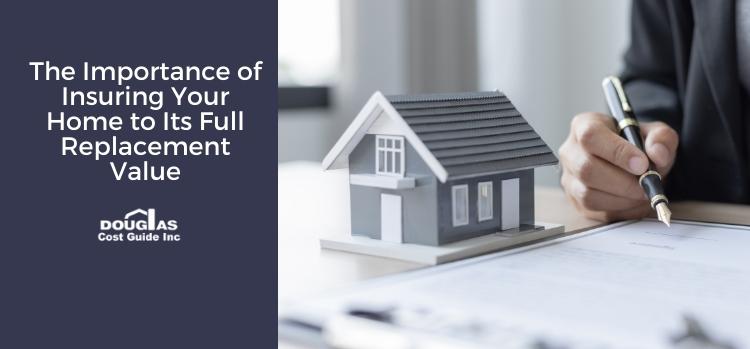Working families who experience the dream of homeownership are required to purchase insurance coverage by their lender. First-time buyers sometimes assume homeowners insurance policies are mandated to protect their living space and belongings in the event of a catastrophe. In reality, banks insist on insurance to protect their investment — the mortgage principal.
What too often occurs is that property owners maintain coverage based on the real estate valuation. But that figure does not necessarily reflect how much it would cost to replace the house in the event of a total loss. By understanding the differences between replacement value and market value, you’ll be able to make informed decisions about how much coverage you need to protect your family home.
What Does Full Replacement Value Mean?
The importance of insuring your home to its full replacement value cannot be understated. That estimate is also mutually exclusive from how much you could get for your house on the real estate market. For instance, if you live in an area with excellent schools, parents might be willing to pay a premium for a house to get a better education for their children.
By contrast, replacement value involves how much it would cost if the structure were unrepairable or destroyed. To calculate total replacement value, you would need to start with basic concepts such as total square footage, number of stories, as well as roof and foundation type, among others. Then, you’d need a resource to help generate accurate estimates regarding the following.
- Cost to raze the damaged structure.
- Cost to dispose of debris and materials.
- Cost to get permits to restart construction.
- Cost of materials in the immediate area.
- Cost of skilled and unskilled labor.
- Cost of specialized materials or design elements in the original structure.
As you can see, the items listed to clear the lot and rebuild have nothing in common with curbside appeal and asking price. When a home is devastated by a severe weather event or tragic fire, you engage in new construction with the added cost of readying the premises.
Why Insuring Your Home for Market Value is a Bad Idea
It may come as something of a surprise, but new construction is typically far more expensive than the price of an existing home. If you were to base your replacement coverage on market value, it’s almost a certainty your insurance would fall short. Should you leave your replacement ceiling at $200,000 and rebuilding runs $300,000, for example, you’d have to make up the $100,000 difference out of pocket or by taking on a second mortgage.
The good news is this scenario is entirely avoidable if you use a reliable cost replacement estimating resource and adjust your coverage accordingly.
Calculate Your Home Replacement Cost with the Douglas Residential Cost Guide
Accurately calculating the replacement cost of your home has never been more straightforward. The Douglas Residential Cost Guide provides user-friendly, up-to-date information that can be accessed online. This trusted resource is also widely accepted by insurance companies. If you are concerned about falling short on replacement coverage, get an accurate estimate by subscribing to the Douglas Residential Cost Guide today.

